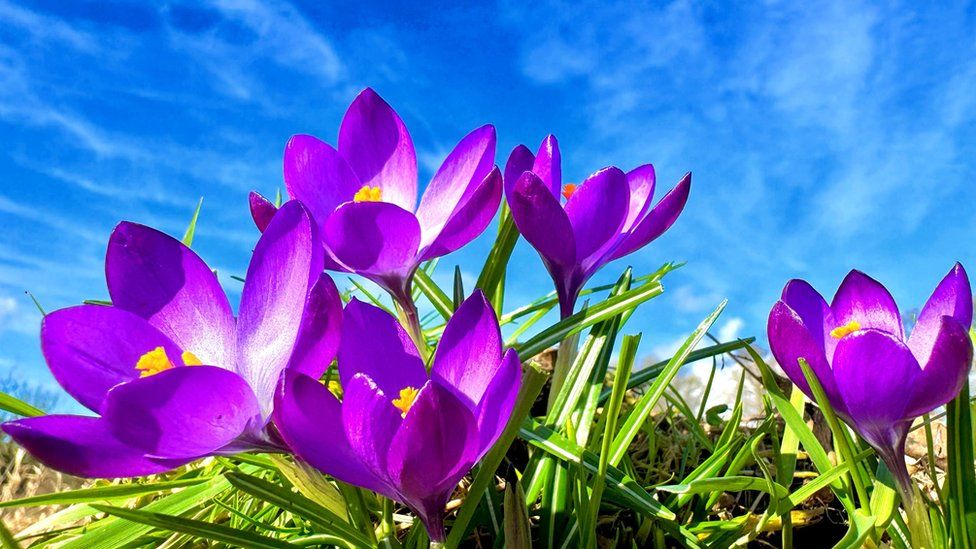Winter warmth brings early blossom across the UK
- Published

Weather Watcher Nellington took this picture of stunning purple blooms in Perth and Kinross
It certainly looks as though spring has sprung - with a burst of March colour across the UK.
A vibrant display of flowers and blossoms is not unexpected in spring, of course, but according to the National Trust some blooms have emerged four weeks earlier than usual.
It's thanks to the mild, wet winter weather that brought the UK's second warmest February on record - the warmest for England and Wales - and scientists say it's part of a broader trend as a result of climate change.
These magnolia blossoms were captured in Devon by Weather Watcher Alan O
A study by Cambridge University in 2022 found that the UK's flowers are blooming one month earlier than they used to. That includes classic spring varieties such as crocuses and daffodils, as well as many species of flowering trees.
While an early show of colour might be a welcome sight, it has knock-on effects for ecosystems as plants get out of sync with species that rely on them, such as birds and insects.
Weather Watcher Stamford Farm pictured these daffodils in full bloom in Flintshire
The magnolia is one tree that has blossomed particularly early this year, including at Kew Gardens in London.
Gardeners there say it's not surprising for one or two magnolias to flower in February - but to have so many species in bloom is unusual. They say it's down to climate change and a reduction in the number of frosts, and is part of an increasing trend.
Just one of the many varieties of magnolia that bloomed early at Kew Gardens
Historical data from the Met Office shows the UK now sees about three weeks less of ground frost annually than it did 50 or 60 years ago.
To put it another way, in the winter months (December, January and February) Cumbria and Edinburgh now see the same number of frosts as southerly Sussex and Kent did in the 1960s and 1970s.
Weather Watcher Ar took this picture of early blossom in Lincolnshire in February
Climate scientists say our winters will keep getting warmer and milder on average as the world continues to warm.
But while the number of frosty days is decreasing overall, individual frosts can and will still happen well into the spring. Those plants that bloom early will be more vulnerable to those late-season frosty spells.
In the longer term, gardeners warn that with fewer cold winters some trees and shrubs are at risk of becoming less resilient overall.
You can send us pictures of the spring colour where you are by signing up to BBC Weather Watchers.
- Published1 March
- Published28 February
- Published4 March